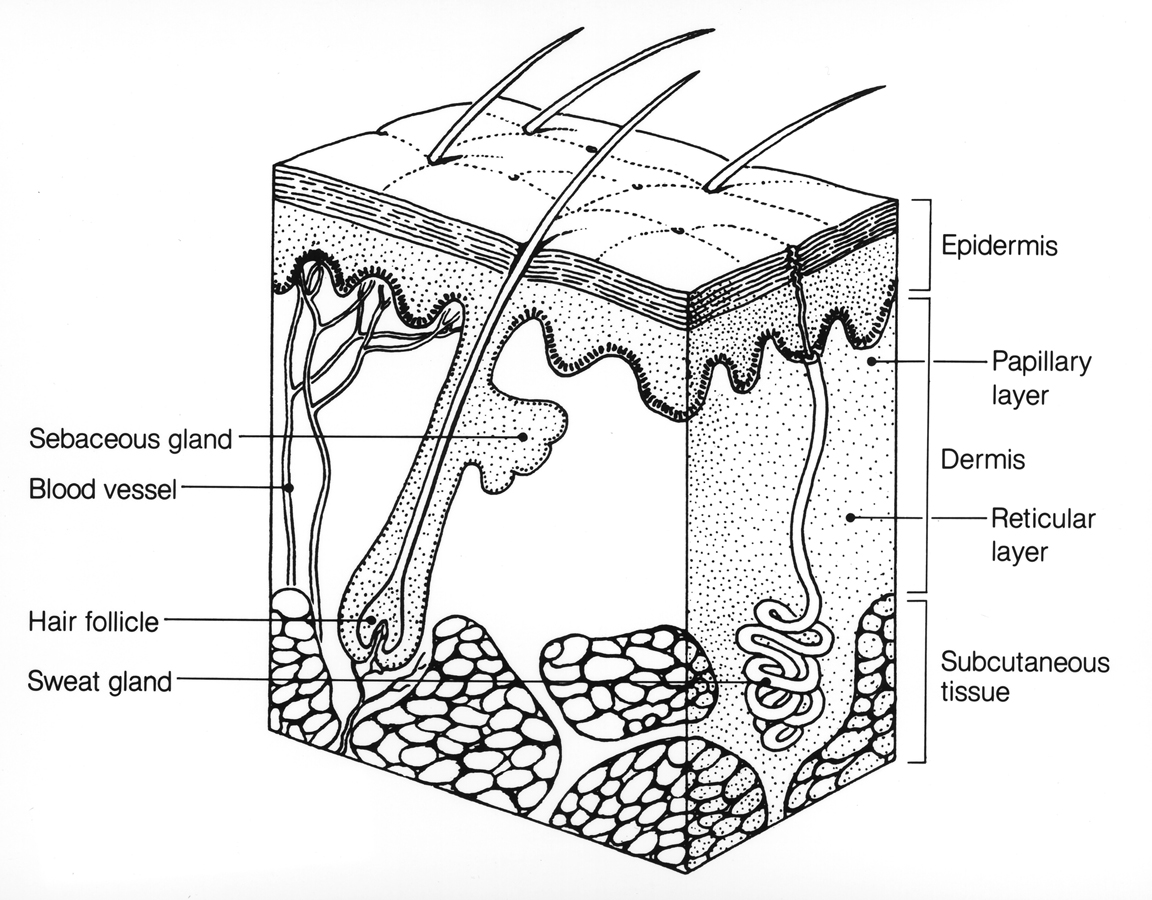
Which connective tissue composes the dermis of the Skin?
Answer
393k+ views
Hint: Connective tissues hold structures together, provide a framework and support for organs and the entire body, store fat, transport substances, protect against disease, and aid in tissue repair. They can be found all over the body.
Complete answer:
The Dermis is the skin layer underneath the epidermis and above the subcutaneous layer. It is the skin's thickest layer, made up of fibrous and elastic tissue. As a result, it gives skin strength and flexibility.
Papillary layer: Loose connective tissue is found in the papillary layer.
Reticular layer: Connective tissue that is dense and irregular.
• The epidermis and dermis are the two main layers of our skin. The epidermis is made up of epithelium, and the dermis is made up of connective tissue.
• The epidermis is supported by the dermis, which binds it to the subcutaneous tissue (hypodermis), which is the loose connective tissue beneath the skin.

• The outermost papillary layer and the deeper reticular layer make up the dermis. The thin papillary layer is made up of loose connective tissue and papillae that connect it to the epidermis. Papillae may serve as touch receptors or nourish the epidermis.
• The thick reticular layer, meanwhile, is made up of dense connective tissue with irregular collagen fiber bundles ( dense irregular connective tissue ). Hair follicles, sweat glands, Pacinian corpuscles, which sense pressure, lymph vessels, and smooth muscle are all found in the reticular layer.
Note:
• The dermis' primary function is to support the epidermis and allow the skin to thrive.
• Due to the presence of nerve endings, sweat glands, sebaceous glands, hair follicles, and blood vessels, it also serves a variety of other functions.
Complete answer:
The Dermis is the skin layer underneath the epidermis and above the subcutaneous layer. It is the skin's thickest layer, made up of fibrous and elastic tissue. As a result, it gives skin strength and flexibility.
Papillary layer: Loose connective tissue is found in the papillary layer.
Reticular layer: Connective tissue that is dense and irregular.
• The epidermis and dermis are the two main layers of our skin. The epidermis is made up of epithelium, and the dermis is made up of connective tissue.
• The epidermis is supported by the dermis, which binds it to the subcutaneous tissue (hypodermis), which is the loose connective tissue beneath the skin.

• The outermost papillary layer and the deeper reticular layer make up the dermis. The thin papillary layer is made up of loose connective tissue and papillae that connect it to the epidermis. Papillae may serve as touch receptors or nourish the epidermis.
• The thick reticular layer, meanwhile, is made up of dense connective tissue with irregular collagen fiber bundles ( dense irregular connective tissue ). Hair follicles, sweat glands, Pacinian corpuscles, which sense pressure, lymph vessels, and smooth muscle are all found in the reticular layer.
Note:
• The dermis' primary function is to support the epidermis and allow the skin to thrive.
• Due to the presence of nerve endings, sweat glands, sebaceous glands, hair follicles, and blood vessels, it also serves a variety of other functions.
Recently Updated Pages
Master Class 11 Business Studies: Engaging Questions & Answers for Success

Master Class 11 Accountancy: Engaging Questions & Answers for Success

Master Class 11 Computer Science: Engaging Questions & Answers for Success

Master Class 11 English: Engaging Questions & Answers for Success

Master Class 11 Social Science: Engaging Questions & Answers for Success

Master Class 11 Economics: Engaging Questions & Answers for Success

Trending doubts
Which one is a true fish A Jellyfish B Starfish C Dogfish class 11 biology CBSE

State and prove Bernoullis theorem class 11 physics CBSE

1 ton equals to A 100 kg B 1000 kg C 10 kg D 10000 class 11 physics CBSE

In which part of the body the blood is purified oxygenation class 11 biology CBSE

One Metric ton is equal to kg A 10000 B 1000 C 100 class 11 physics CBSE

Difference Between Prokaryotic Cells and Eukaryotic Cells




